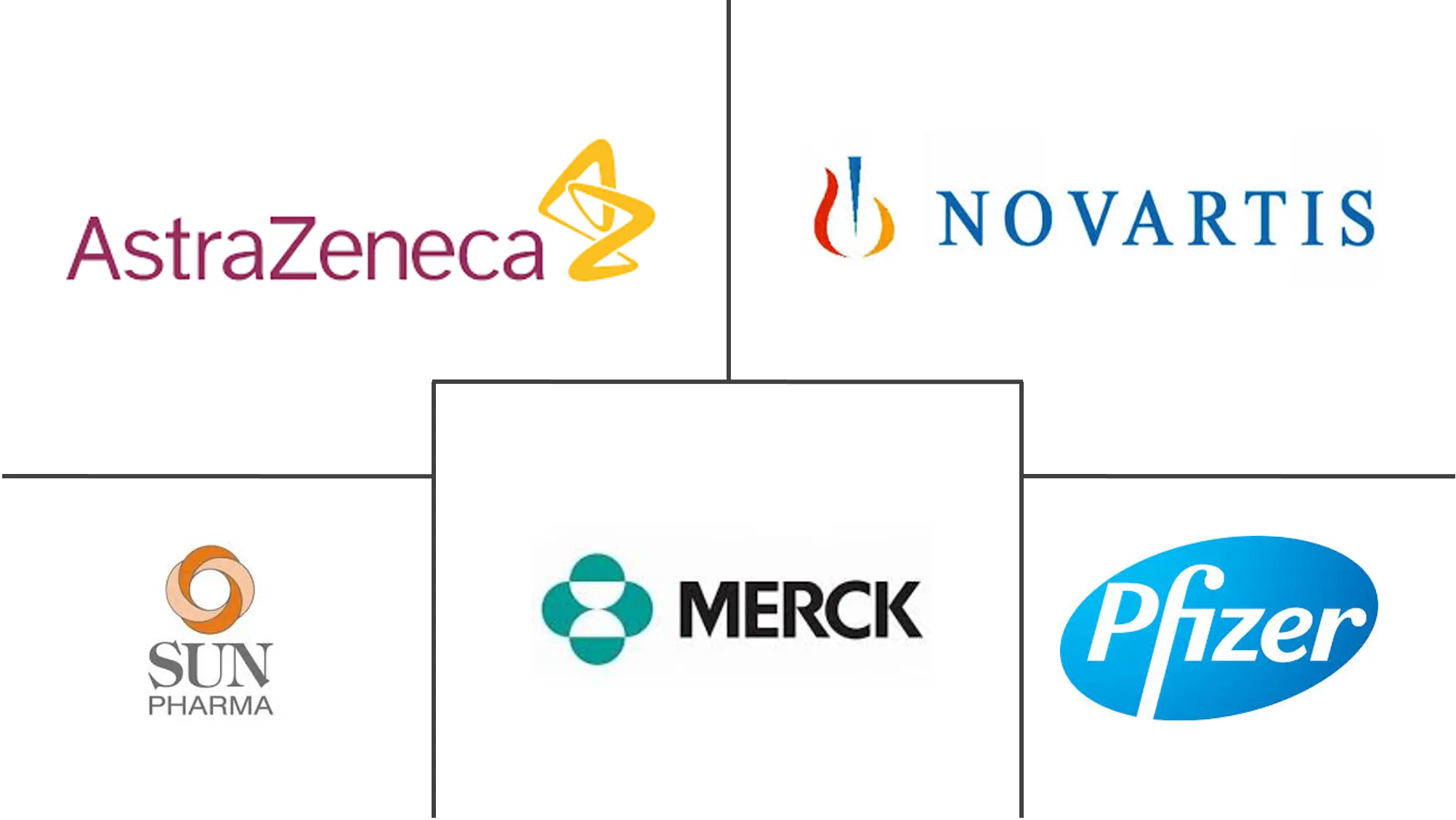Market Size of Lipid Disorder Treatment Industry

| Study Period | 2019 - 2029 |
| Base Year For Estimation | 2023 |
| Forecast Data Period | 2024 - 2029 |
| Historical Data Period | 2019 - 2022 |
| CAGR | 7.80 % |
| Fastest Growing Market | Asia Pacific |
| Largest Market | North America |
Major Players
*Disclaimer: Major Players sorted in no particular order |
Lipid Disorder Treatment Market Analysis
The major factors attributing to the growth of the lipid disorder treatment market are the growing prevalence of lifestyle diseases like obesity and increasing smoking and alcohol consumption. Lifestyle diseases are conditions associated with the way people live. They include atherosclerosis, heart disease, stroke, obesity, and type 2 diabetes. As per the World Health Organization (WHO), in 2016, more than 1.9 billion adults, 18 years and older, were overweight. Of these over 650 million were obese, However, in 2018, 40 million children under the age of 5 were overweight or obese.
Furthermore, the increasing growth of familial combined hyperlipidemia incidence rate also plays a major role in the growth of the market. However, the side effects of the medication involved in the treatment are the restraint to the growth of the market.
Lipid Disorder Treatment Industry Segmentation
As per the scope of the report, lipid disorders comprise a broad spectrum of conditions where the blood lipid levels are affected. Generally, it is associated with an increase in the blood lipid levels.
| By Indication | |
| Hypercholesterolemia | |
| Dysbetalipoproteinemia | |
| Familial Combined Hyperlipidemia | |
| Others |
| By Distribution Channel | |
| Hospital Pharmacies | |
| Retail Pharmacies | |
| Online Pharmacies |
| Geography | ||||||||
| ||||||||
| ||||||||
| ||||||||
| ||||||||
|
Lipid Disorder Treatment Market Size Summary
The lipid disorder treatment market is experiencing growth driven by the increasing prevalence of lifestyle diseases such as obesity, heart disease, and type 2 diabetes, which are linked to factors like smoking and alcohol consumption. The rise in familial combined hyperlipidemia, a common congenital disorder that elevates blood fats, is also contributing to market expansion. This condition, which leads to high cholesterol and triglycerides, necessitates treatment with statins, a class of drugs that are also used for obesity-related conditions. Despite the potential side effects of these medications, the demand remains high due to the significant patient pool, making the market lucrative for pharmaceutical companies.
North America is projected to lead the lipid disorder treatment market during the forecast period, supported by the presence of key industry players, a high prevalence of lifestyle disorders, and a well-established healthcare infrastructure. The United States, in particular, holds a substantial market share, driven by a notable incidence of high cholesterol among children and adolescents. Government initiatives and increased awareness are further propelling market growth in the region. The market is moderately competitive, with major companies like Pfizer, Novartis, AstraZeneca, and Merck playing a dominant role in shaping the industry's landscape.
Lipid Disorder Treatment Market Size - Table of Contents
-
1. MARKET DYNAMICS
-
1.1 Market Overview
-
1.2 Market Drivers
-
1.2.1 Increase in Prevalence of Several Lifestyle Diseases
-
1.2.2 Rise in the Smoking and Alcohol Consumption
-
-
1.3 Market Restraints
-
1.3.1 Side effects of the treatment
-
-
1.4 Porter's Five Force Analysis
-
1.4.1 Threat of New Entrants
-
1.4.2 Bargaining Power of Buyers/Consumers
-
1.4.3 Bargaining Power of Suppliers
-
1.4.4 Threat of Substitute Products
-
1.4.5 Intensity of Competitive Rivalry
-
-
-
2. MARKET SEGMENTATION
-
2.1 By Indication
-
2.1.1 Hypercholesterolemia
-
2.1.2 Dysbetalipoproteinemia
-
2.1.3 Familial Combined Hyperlipidemia
-
2.1.4 Others
-
-
2.2 By Distribution Channel
-
2.2.1 Hospital Pharmacies
-
2.2.2 Retail Pharmacies
-
2.2.3 Online Pharmacies
-
-
2.3 Geography
-
2.3.1 North America
-
2.3.1.1 United States
-
2.3.1.2 Canada
-
2.3.1.3 Mexico
-
-
2.3.2 Europe
-
2.3.2.1 Germany
-
2.3.2.2 United Kingdom
-
2.3.2.3 France
-
2.3.2.4 Italy
-
2.3.2.5 Spain
-
2.3.2.6 Rest of Europe
-
-
2.3.3 Asia-Pacific
-
2.3.3.1 China
-
2.3.3.2 Japan
-
2.3.3.3 India
-
2.3.3.4 Australia
-
2.3.3.5 South Korea
-
2.3.3.6 Rest of Asia-Pacific
-
-
2.3.4 Middle-East and Africa
-
2.3.4.1 GCC
-
2.3.4.2 South Africa
-
2.3.4.3 Rest of Middle-East and Africa
-
-
2.3.5 South America
-
2.3.5.1 Brazil
-
2.3.5.2 Argentina
-
2.3.5.3 Rest of South America
-
-
-
Lipid Disorder Treatment Market Size FAQs
What is the current Lipid Disorder Treatment Market size?
The Lipid Disorder Treatment Market is projected to register a CAGR of 7.8% during the forecast period (2025-2030)
Who are the key players in Lipid Disorder Treatment Market?
Pfizer, Inc, Novartis AG, Astrazeneca Plc, Merck & Co., Inc and Sun Pharma are the major companies operating in the Lipid Disorder Treatment Market.

